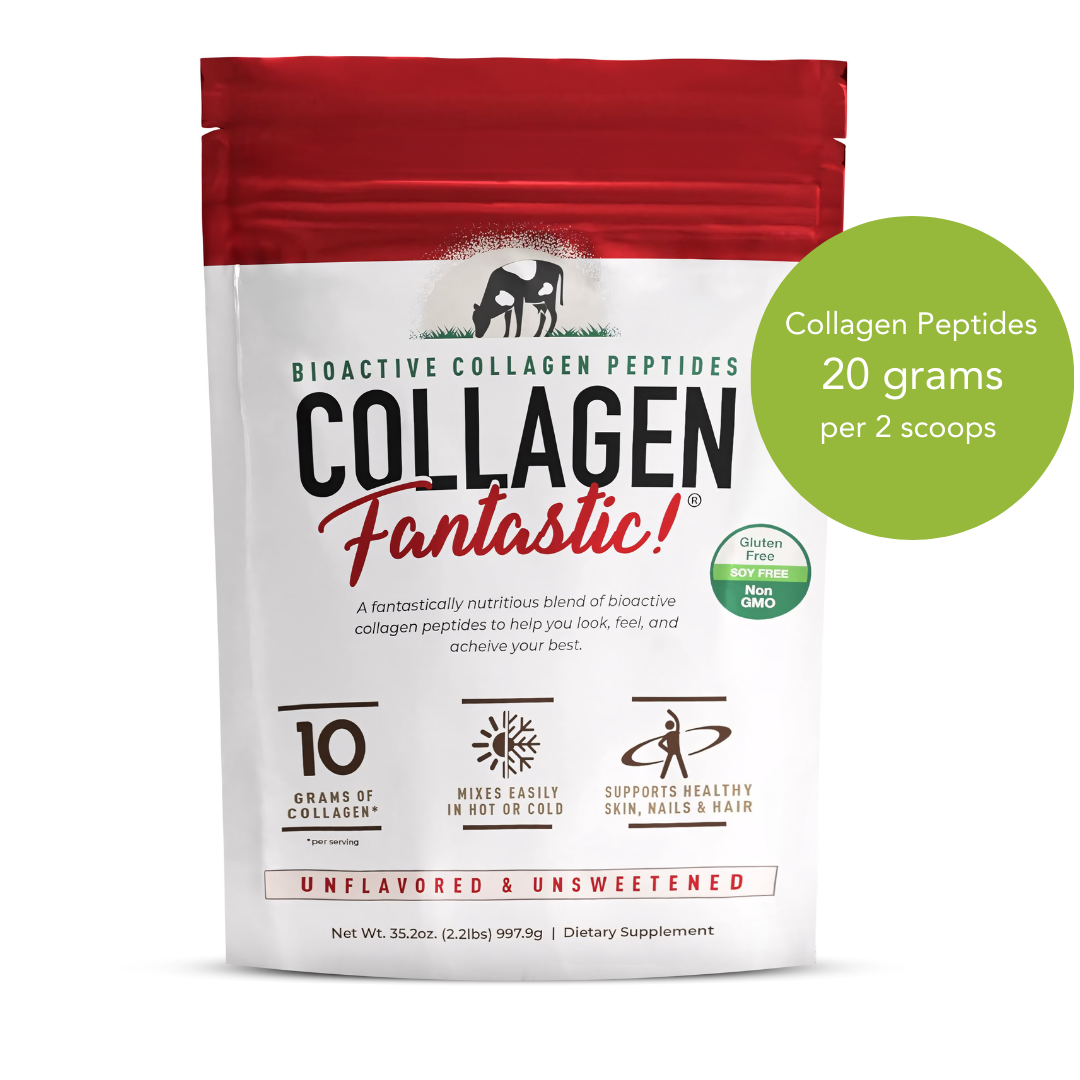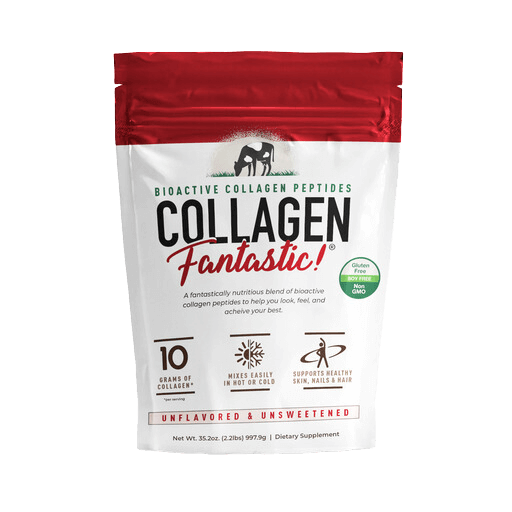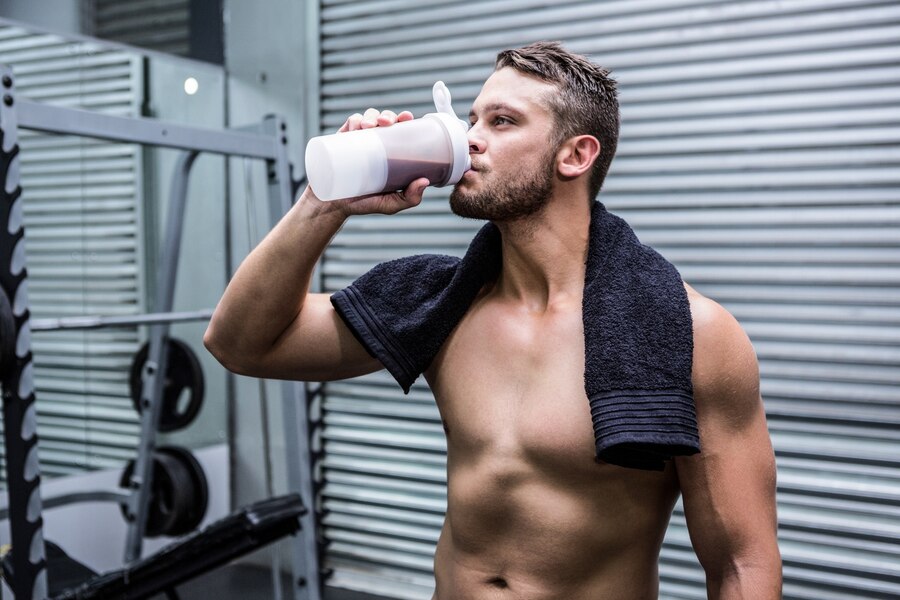Key Takeaways:
· Prioritize total daily protein intake and distribution across meals to maximize muscle protein synthesis, rather than focusing solely on the post-workout "anabolic window."
· The timing of protein intake is more flexible than once believed, with post-workout recovery benefiting from a combination of protein and carbs, particularly after intense or exhaustive sessions.
· Use high-quality protein sources and aim for even feedings throughout the day to optimize muscle repair and growth, tailoring strategies based on individual goals, training types, and dietary preferences.
The Protein Post-Workout Myth: Timing, Absorption, and Results
If you’ve ever hustled from the squat rack to the shaker bottle like your gains depended on a 30-minute countdown, you’re not alone. The “anabolic window” has been fitness lore for years. But how much of that urgency is science, and how much is story?
In this guide, we’ll dig into what research really says about timing, absorption rates, and total daily protein, and how variables like your last meal, training intensity, age, and goals influence the equation. You’ll learn when timing can matter, when it doesn’t, and how to build a simple, sustainable routine that supports recovery and performance without micromanaging the clock.

Origins of the Post-Workout Protein Window Theory
The “anabolic window” didn’t emerge from gym lore alone—it was born in the lab, then amplified in locker rooms and marketing decks. The earliest seeds were planted in the 1980s and 1990s, when exercise physiologists began mapping the body’s acute response to resistance training. Small, tightly controlled studies showed that muscle protein synthesis spikes after lifting, and that ingesting amino acids—especially leucine-rich protein—can enhance that spike. Those data points were powerful, concrete, and easy to summarize. The leap from “protein stimulates post-exercise muscle protein synthesis” to “you must drink a shake within 30 minutes or you’ll miss your gains” was more of a narrative shortcut than a direct conclusion.
A few methodological quirks helped the theory take root:
· Acute markers over long-term outcomes: Many early studies tracked short-term protein synthesis rather than weeks or months of hypertrophy and strength. It’s like judging a season by one inning—useful, but not definitive.
· Fasted-state testing: Participants often arrived fasted, then trained and consumed protein. That design magnifies the contrast between “no nutrients” and “nutrients now,” which isn’t how most people actually train after eating meals throughout the day.
· Homogeneous samples: Young, trained males dominated the subject pool, limiting how broadly the results could be applied. The more homogenous the sample, the more fragile the generalization.
By the late 1990s and early 2000s, the concept gained cultural momentum. Sports nutrition companies translated nuanced findings into bold directives—“Don’t miss the window”—and gym culture repeated it until it became gospel. Meanwhile, whey protein’s rapid digestion profile dovetailed perfectly with the urgency story: fast-absorbing protein, fast-ticking clock. It felt scientific, actionable, and conveniently product-aligned.
As the research matured, meta-analyses and longer trials complicated the picture. They suggested that total daily protein, distribution across meals, and proximity to training all matter, but rigid minute-by-minute deadlines rarely do—especially if you’ve eaten protein in the hours before training. Still, the idea of a narrow window refuses to die because it’s sticky: a simple, high-stakes rule that offers certainty in a space that thrives on nuance.
In other words, the “window” began as a signal in the noise—real physiology, viewed through the small telescope of early study designs—then grew into a rule of thumb that overshot the data. The reality is more flexible: timing can help, particularly for those training fasted or aiming to optimize every percent of adaptation, but the myth of a vanishing door to gains was built as much by narrative momentum as by science.
Ready to Rethink Your Post-Workout Protein? Live Fantastic.You don’t need myths—you need results you can trust. If you’re ready to dial in your recovery with clean, science-backed nutrition, Fantastic Nutrition has your back. · Shop smarter, not harder: Explore our premium, lab-verified proteins, collagen peptides, and creatine blends—non-GMO, gluten-free, soy-free, and crafted under strict cGMP standards. · Cut the markup, keep the quality: We’re 100% direct-to-consumer so you get elite formulas without the inflated price tag. · Recover with confidence: Transparent labels, no artificial additives, and independent testing mean you know exactly what’s fueling your progress. · Built for every body: Inclusive options for dietary needs and the Accessibly App for a smoother, more accessible shopping experience. · Expert support on demand: Our team of nutritionists and product researchers is here to help you personalize your routine. · Risk-free trial: Try it with our 100% satisfaction guarantee and flexible, secure checkout—plus free or discounted shipping on eligible orders. The window for results isn’t a minute—it’s a mindset. Optimize your protein strategy and feel the difference in every rep, run, and recovery. Live Fantastic. Start now with Fantastic Nutrition. |
Muscle Protein Synthesis Explained: Stimulus vs Nutrient Supply
Think of muscle protein synthesis (MPS) as a two-part system with distinct jobs: the “on” switch (stimulus) and the “building materials” (nutrient supply). You need both to build muscle, but they don’t play the same role, and they don’t operate on the same timeline.
· The stimulus: Mechanical tension, muscle damage, and metabolic stress from training—especially lifting—activate cell signaling pathways like mTOR. This is the green light telling your body, “Start rebuilding and upgrading.” The stimulus peaks after training but doesn’t vanish immediately; it sets off a multi-hour (even multi-day) cascade of recovery processes depending on training volume, intensity, and your training status.
· The nutrient supply: Amino acids—particularly leucine—are the raw materials and the “spark” that actually drives MPS upward once the stimulus is in place. Without sufficient amino acids in circulation, the signaling is ready, but there’s not enough inventory to fill the order.
Here’s where timing myths tend to creep in. The classic “anabolic window” idea suggests that if you don’t crush a protein shake in the 30 minutes after your final rep, the gains pack up and leave. Reality is more forgiving. MPS is elevated for hours after training, and your body is still receptive to protein well beyond the locker-room selfie. What matters most is:
1) Total daily protein: Hitting an appropriate daily target for your body size and goals remains the biggest lever. Without that, precise timing is window dressing.
2) Distribution and dose: Spreading protein across meals and snacks (e.g., 3–5 feedings per day) with around 20–40 g high-quality protein per serving helps trigger repeated MPS responses. The exact dose depends on body size and age; older adults often benefit from the higher end due to anabolic resistance.
3) Pre-existing amino acids: If you trained after a protein-containing meal, you likely already have elevated amino acids circulating for several hours. That means your “post-workout window” started before your first set and continues well past your cooldown.
4) Post-workout opportunity, not emergency: A convenient 0–2 hour post-training window is a smart time to get a protein-rich meal or shake, especially if you trained fasted or have another session later. But it’s not a cliff edge—consistency outperforms panic.
A note on absorption and speed: Fast-digesting proteins (like whey) can raise blood amino acid levels quickly, which is useful when you want a sharp MPS bump. Slower-digesting proteins (like casein or mixed meals) deliver a prolonged trickle of amino acids that support the longer recovery arc. In practice, both can be effective tools, and choosing one often comes down to personal preference, schedule, and how your stomach feels after training.
The critical takeaway: Training provides the signal; protein provides the supply. Optimize both. Lift hard to flip the switch, then meet your daily protein needs and distribute intake sensibly. That’s the real blueprint—no stopwatch required.
Digestion Speed and Absorption: Whey, Casein, and Whole Foods
Let’s talk timelines—because not all protein shows up to the party at the same pace.
· Whey: the sprint. Whey protein is rapidly digested, with amino acids hitting the bloodstream within 30–60 minutes and peaking fast. This makes it a go-to when you want quick support for muscle protein synthesis after training. Leucine—whey’s headline act—helps flip the switch on MPS quickly, which is why you’ll often see whey framed as the “post-workout default.”
· Casein: the marathon. Casein coagulates in the stomach, slowing gastric emptying and creating a steady amino acid drip for several hours. It’s ideal when you want long, sustained support—think before bed, or when your next meal is far off. It won’t spike MPS as quickly as whey, but it’s strong at reducing muscle protein breakdown over time.
· Whole foods: the steady players. Chicken, fish, eggs, Greek yogurt, tofu, and legumes deliver protein alongside fats, fiber, and micronutrients, all of which slow digestion. The result is a moderate, prolonged amino acid release. Whole-food proteins can match total daily protein needs just fine and often bring satiety and nutrient density that powders can’t. The trade-off? Less portability and slower absorption compared to whey.
What this means for absorption and results:
· Speed versus coverage: Rapid absorption (whey) is great when you want an early spike in amino acids. Slow absorption (casein, mixed meals) extends the runway. Both are useful depending on context.
· The blend effect: Pairing fast and slow proteins can flatten the peaks and fill the valleys—e.g., whey post-workout, casein later in the day. Many lifters and athletes use this approach to keep amino acids available across the full recovery window.
· Leucine threshold matters more than hype: Aim for roughly 2–3 grams of leucine per serving to trigger a robust MPS response. Whey gets there easily; whole-food meals can hit it with adequate portion sizes (e.g., ~25–35 grams of high-quality protein).
· Fiber, fat, and form change the clock: Add nut butter to a whey shake, or pair steak with veggies and olive oil, and you’ve just slowed gastric emptying. That’s not a bug—it’s a lever you can pull depending on whether you want speed or staying power.
· The 24-hour lens: Zoom out. Your total daily protein intake and distribution across 3–5 feedings generally outweigh the micro-optimizations of “fast vs. slow.” Use speed strategically, but remember consistency is the backbone of progress.
Practical plays:
· Post-workout rush? Whey shines when you need something light, quick, and easy on the stomach.
· Long gaps between meals or pre-sleep? Casein—or a whole-food meal with protein, fat, and fiber—keeps the amino acid drip alive.
· Whole-food anchors: Build your day around complete protein sources, then plug gaps with convenience options. The best protein is the one you can take consistently, in the right amounts, without digestive drama.
Protein Dose Per Meal: Debunking the 20-Gram Ceiling
The “20-gram rule” has had a good run—simple, tidy, and repeated so often it sounds like gospel. But the data says otherwise. Muscle protein synthesis (MPS) isn’t a light switch that flips on and caps out at a single number for everyone; it’s a dimmer controlled by dose, body size, training status, and context.
Here’s what the research actually shows:
· For many adults, around 20–25 g of high-quality protein will robustly stimulate MPS at rest. That’s the origin of the myth.
· In real-world training scenarios, especially after whole-body or high-volume sessions, larger doses—30–40 g—can generate greater MPS responses.
· Larger individuals, older adults (due to anabolic resistance), and experienced lifters often benefit from the higher end of that range per meal, sometimes pushing to 0.4–0.6 g/kg per meal.
· Whole foods digest more slowly and contain varying leucine content, so the effective “dose” to maximize MPS can shift depending on protein quality and meal composition.
A few practical anchors:
· Aim for about 0.25–0.4 g of protein per kilogram of body weight per meal. That’s roughly 20–35 g for many people, closer to 35–50 g for larger or older athletes.
· Quality matters. Proteins rich in leucine (like whey, dairy, eggs, lean meats) typically trigger MPS more efficiently than lower-leucine sources. Plant-based proteins can absolutely work—just pay attention to total dose and diversify sources (e.g., combine legumes and grains).
· Training load and timing are context setters, not dictators. After a tough session, favor the higher end of your range. If your day is lighter or you’re between sessions, steady, balanced meals still do the job.
The ceiling isn’t 20 grams; it’s more of a moving target shaped by your body, your goals, and your plate. If you’re a smaller, younger trainee with moderate volume, 20–25 g can be perfectly fine. If you’re bigger, older, or training hard, don’t be afraid of 35–45 g in a meal—especially when it comes from whole, minimally processed foods. The key is consistent, high-quality doses spread across the day, not ritual adherence to a single number.
Bottom line: Hit your daily protein target, distribute it across meals, and use supplements to simplify—not complicate—your routine. Skip the stopwatch. Trust the science. Build consistency. Live Fantastic!
FAQs: The Protein Post-Workout Myth — Timing, Absorption, and Results
Is fasted training detrimental if I delay protein intake for several hours?
For most healthy lifters, no—provided your total daily protein is adequate. Current research suggests that delaying your first protein-containing meal by up to 3–4 hours after fasted training doesn’t meaningfully compromise muscle protein synthesis or strength adaptations over time. What matters most is hitting your daily protein target (generally 1.6–2.2 g/kg body weight for active individuals) and distributing that protein across 3–5 meals. If performance or appetite suffer after fasted sessions, consider a small protein-rich meal sooner—but it’s not mandatory.
Can older adults benefit from different protein-timing strategies than younger lifters?
Yes. Due to age-related “anabolic resistance,” adults over 60 typically need higher per-meal doses of high-quality protein to achieve the same anabolic response. Aim for 0.4–0.6 g/kg per meal, with a focus on leucine-rich sources (about 2.5–3 g leucine per meal). Practical playbook: 3–4 meals spaced 3–4 hours apart, each delivering 30–40 g of complete protein, plus a pre-sleep protein serving. Resistance training remains the primary driver—protein timing refines the result.
Does combining caffeine with a post-workout protein shake affect muscle recovery?
Moderate caffeine intake (around 3–6 mg/kg) does not impair muscle protein synthesis when combined with protein after training. In fact, caffeine may enhance glycogen resynthesis—incredibly useful after hard sessions or two-a-day schedules. Keep hydration, carbs, and total protein on point. If you’re sensitive to caffeine or training late, mind sleep quality—arguably a bigger recovery lever than any timing tweak.
How effective are plant-based proteins for post-exercise muscle repair compared with whey?
When total essential amino acids—especially leucine—are matched, plant isolates like soy, pea, and rice can deliver comparable outcomes to whey for strength and hypertrophy. The trick is dose and composition. Many plant proteins are lower in leucine and/or essential amino acids, so slightly higher servings (e.g., 30–40 g) or blends (pea + rice) can level the playing field. Look for products with at least 2.5 g leucine per serving and complete EAA profiles.
Does pre-sleep protein really improve overnight muscle protein synthesis?
Yes. Studies show that consuming 30–40 g of slow-digesting casein about 30 minutes before bed can elevate overnight muscle protein synthesis, improving net protein balance without harming sleep. If you’re dairy-free, consider a larger serving of plant protein isolate or a balanced plant blend. Pre-sleep protein is a small, steady win—especially during high-volume training blocks or when chasing body recomposition.
Are women’s protein-timing needs different from men’s?
Relative to body weight, women’s per-meal and daily protein targets are similar to men’s. Hormonal fluctuations across the menstrual cycle can slightly influence recovery dynamics—estrogen has anti-catabolic properties—but the practical guidance holds: 1.6–2.2 g/kg/day total protein, distributed over 3–5 meals with 0.3–0.5 g/kg per meal. During high-intensity phases or in the late luteal phase, some women find a small bump in total protein and carbs improves how they feel and perform.
Will adding fats or fiber to a post-workout meal blunt the anabolic response?
Not in a meaningful way. Fats and fiber slow gastric emptying, which can modestly delay peak amino acid appearance in the blood, but total amino acid uptake into muscle remains intact. Mixed meals are fine—and often better for satiety, micronutrients, and overall diet quality. If you need rapid refueling for a second session the same day, prioritize protein plus faster-digesting carbs; otherwise, build balanced plates.
How does alcohol after training interfere with muscle protein synthesis?
Alcohol is a recovery saboteur, especially in higher doses. Consuming more than ~0.5 g ethanol/kg body weight (roughly 3–4 standard drinks for a 70-kg person) within two hours post-exercise can reduce muscle protein synthesis by up to 37%, even when protein is consumed. If you choose to drink, keep it light, hydrate aggressively, and front-load protein and carbs. Your future training sessions will thank you.
Is intra-workout protein necessary for endurance events lasting several hours?
It’s not strictly necessary, but small amounts can help. For ultra-endurance or multi-hour events, 5–10 g protein per hour alongside 30–90 g carbohydrate can reduce muscle protein breakdown, support immune function, and improve next-day readiness. Many athletes use carb-electrolyte solutions plus a small protein top-up or BCAA/EAA blend. For typical 60–90 minute sessions, intra-workout protein isn’t needed.
Does a chronically high-protein diet pose a kidney risk for healthy athletes?
In people with normal renal function, intakes up to about 3.0–3.5 g/kg/day have not been shown to impair kidney health in controlled studies. That said, most athletes don’t need to go that high; 1.6–2.2 g/kg/day covers the performance sweet spot for the majority. If you have kidney disease, diabetes, hypertension, or take nephrotoxic medications, consult your clinician for personalized guidance and regular monitoring.
How should I prioritize protein timing if my schedule is chaotic?
Keep it simple:
· Hit your daily total first.
· Spread protein across 3–5 meals, 3–4 hours apart.
· Anchor meals around training: one within 2 hours before or after.
· Add pre-sleep protein when training hard or cutting. Consistency beats perfection. Small, repeatable habits win.
What are some easy, high-quality options to lock in post-workout protein?
· Whey isolate shake with a banana--get your Whey Fantastic! here
· Plant blend (pea + rice) smoothie with oats and berries
· Greek yogurt with honey and granola
· Egg-white scramble on gluten-free toast with fruit
· Collagen plus EAA add-on if you love collagen’s joint/skin perks (collagen alone isn’t a complete muscle protein—pair it with EAAs or a complete protein)
Where can I find clean, lab-verified protein without breaking the bank?
Fantastic Nutrition offers premium, non-GMO, gluten-free, soy-free protein powders—whey, plant-based blends, and casein—manufactured to cGMP standards with independent lab verification. As a direct-to-consumer brand, we keep prices competitive, support accessible shopping experiences, and back every order with a 100% satisfaction guarantee. Live Fantastic!











